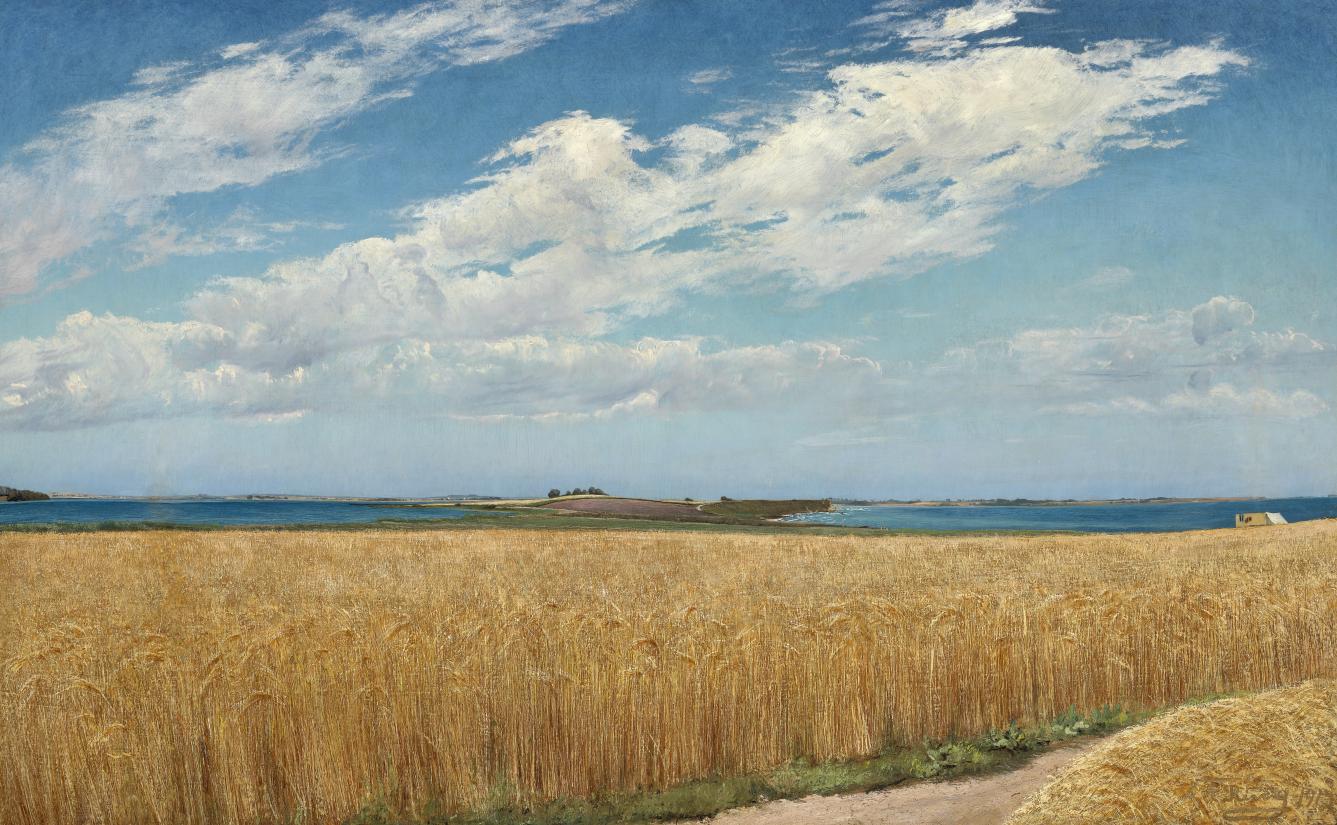Although L. A. Ring is often associated with stark realism and confrontations with darkness and death, his works from the early 20th century clearly show the influence of his love for his wife, Sigrid Kähler. Light has broken through, and a sense of calm has descended. That is also evident in En sommerdag på Enø. En mark med modent korn i forgrunden (A summer’s day on Enø: A field with ripe corn in the foreground), which he painted in 1913.
Modern cropping
The horizon cuts a line through the middle of the landscape, dividing the painting in two: field and sky. However, both planes are broken up, respectively, by the clouds drifting across the sky and the narrow gravel road running through the field at an oblique angle. The gravel road in particular, which both appears and disappears through the lower right corner of the painting, is a characteristic Ring motif. The cropping of the image also marks a connection to the thinking associated with the Modern Breakthrough. Ring does not allow us to the see full course of the road, and from our perspective low in the corn field, we cannot see much of the surrounding landscape. Instead, he shows us a fragmentary section of the world, in the awareness that we can never grasp the world as a whole.
In the painting, Ring has applied a technique that is seen in many of his previous paintings: creating structure by highlighting the individual straws in the yellow summer field with a dry, pointy paintbrush. This sets the stalks out almost in relief, in striking contrast to the clear blue sky with its soft, fluffy clouds.
Ring camping
Enø and the area around it was dear to Ring, and he and his wife, Sigrid, spent many summers there. The summer carriage, which is glimpsed in the background, was a horse-drawn carriage that Ring had converted to serve as a holiday home for himself and his family, so they could spend time in nature. This matched the contemporary fascination with outdoor living and suited Ring’s nomadic temperament. Although the carriage, on the one hand, symbolizes freedom and nomadic living, its static appearance in the painting rather suggests the sense of calm Ring found when he lived and worked in nature.
About L. A. Ring
Laurits Andersen (1854–1933) grew up in the small village of Ring. Like many contemporary artists he adopted the name of his hometown and regularly revisited life in Ring, both through actual visits and in his art.
Ring originally trained as a house painter before being accepted at the Royal Danish Academy of Fine Arts in Copenhagen. However, he never completed his education there, finding the teaching out of step with the time and too far removed from his own artistic approach. Instead, he continued his life-long ‘education’ through his profound interest in both Danish and international art. He addressed and engaged contemporary trends in a very independent way and expressed his nomadic nature in the rich diversity and constant renewal that characterized his artistic practice.



